A note to readers: I drafted this post over the holidays unaware of the horror that would soon unfold in Los Angeles. I initially planned to share this on the evening of January 8th. Not only has it felt inauthentic to continue with business as usual through the ongoing tragedy, but more, in an eerie moment of synchronicity, my post specifically addresses the loss of nearly all of my possessions in a flood. I debated when to continue posting here and if I should rewrite this newsletter with current events in mind. I decided to keep the post intact. But I want to be clear that the loss of my things and my business mentioned here are not meant to be a comparison to the catastrophic events occurring right now, nor is my relative levity around moving on meant to downplay such loss. I share the below because it is the mindset by which I’m approaching the year ahead — personally and design-wise. I built and opened a St. Frank store in the Palisades Village; I can vividly imagine the beautiful streets, houses, schools, and businesses that vanished over the last week. I, like most of you, have many dear friends who’ve lost their homes and so much more. Any words I try to put around this event fall flat, as does any effort to define ‘home.’ Can’t we all sense the expansiveness of whatever ‘home’ is so much more acutely through the ruins? Like you, I am mourning for everyone affected by the fires. I can think of little else. But I do feel the need to put my mind on other things momentarily, or try to. Tonight I invite you to join me.
IT’S TIME TO CLEAN HOUSE
“If you’re down in the dumps, call me. I’m probably nearby.” — Oscar the Grouch
In housekeeping, as in life, I believe in regularly and rigorously cleaning. I’m a purger. As a child of Christian vintners, I have spent ~40 years marinating on the merits of pruning. The concept also applies to your space. This is not an argument for minimalism — I am undoubtedly a maximalist — but rather for the process of continual refining. Sometimes (as happened to me when I put all my belongings in storage and moved to East Africa) a flood comes along and cleans house without permission. Whatever the case, the space created leaves room for something new. Fortunately, I am energized by change, so I can find this space exciting, even if it is difficult and at times heartbreaking.
As I walked through the door marked 2025, I said goodbye to many things that have taken up space in my mind and home (including parting seven months ago with a brand and business I built over nearly 12 years). With that, I’m examining my time and space more closely than I have in the past. Where else should I let go and move on? What utilizes my strengths and my unique perspective? How do I want to grow and challenge myself? The question looms and entices — what’s next? This is true for my life’s work and for the work of refining my home. I believe taking the time to clean house like this — physically and metaphorically — is required to open the door wide enough for the next, better chapter. (You can be sure that I’ll be sharing some such changes to my home this year.)
Thank you for following me on this platform over the last couple of months. My goal here is to help you figure out the next chess move in your grand home design game. I hope this can be a go-to resource for you in that regard. But I’m also here searching. Will you help me figure out ‘what’s next?’ I hope so, dear reader. I’m excited to see what this year holds for us together.
TAKING OUT THE TRASH
On that note, let’s turn to the subject of trash. Waste must have a place in nearly every room of the [tidy] home. And, therefore, its smallish container has a less-than-small opportunity to add or detract from our spaces. This item is often an afterthought, seemly negligible. But in fact, the spaces that sing do so from every nook. Whether it’s a light switch, a door handle, a lampshade, a tissue box cover, or a trashcan, these small textures, patterns, and tactile moments that punctuate our spaces add the layers that bring the magic. Tonight, let’s focus on rubbish bins and choose to make them posher, shall we?
Here are my suggestions for wastebaskets that earn their footprint, organized by material (note that most of these sources sell lovely tissue box covers as well):
PAPER
At the risk of being repetitive, I’ll start by mentioning that in my latest post I included KRB’s Hand-Marbled Paper-Covered Waste Bin that inspired this newsletter’s subject. [Via Instagram poll, you voted to read more about where to shop for waste bins and other small necessities.]
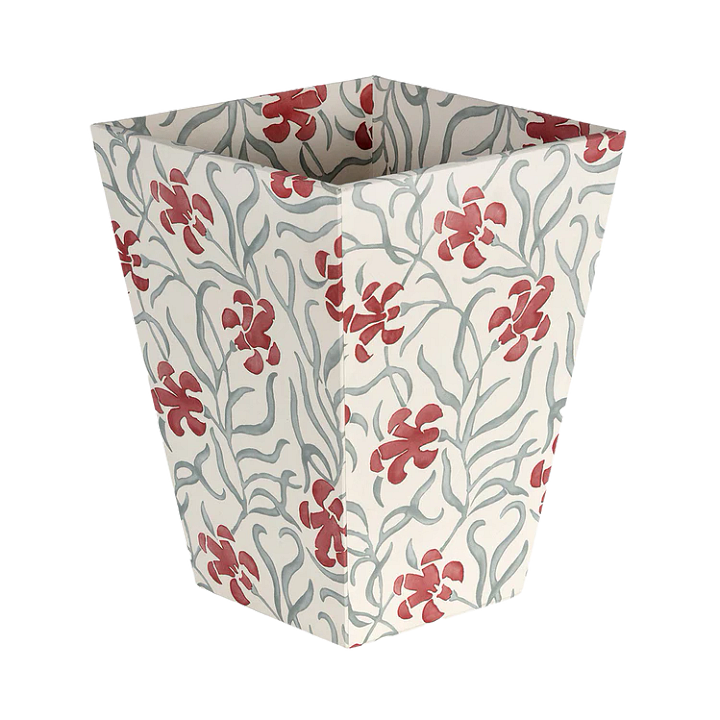
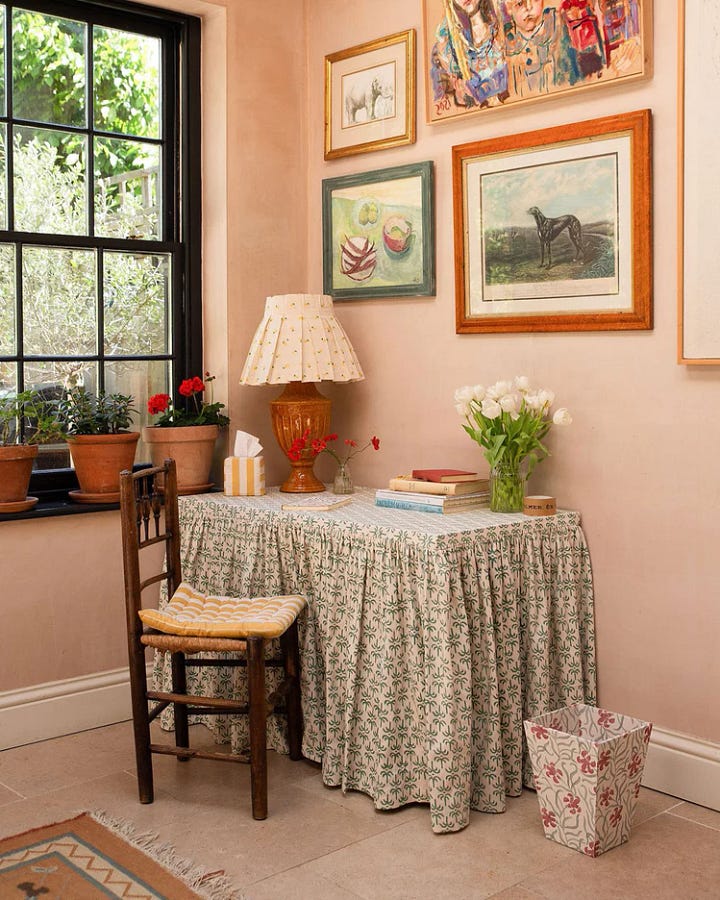
As a long fan of Alice Palmer’s lampshades (I have these in Checked Cheesecloth on the bedside sconces in my daughter’s nursery), I was delighted to recently discover the brand’s waste bins in their signature prints, complete with a removable plastic liner, making them practical for the powder room as well as your desk side.
Il Papiro’s M30, as the not-so-customer-facing SKU name suggests, is an in-person purchase. I could not find one high quality image online. But, the pro of that is you aren’t going to see this item in every home. The Italian brand, with a long-standing outlet on Worth Avenue in Palm Beach (which I assume you can phone for a remote order à la 1985), makes stunning hand-marbleized papers finished into beautiful products, from notebooks to picture frames. In my mind, these are the OG marbled paper products. I’ve opted for these pieces in most of my bedrooms (my daughter is modeling one at the top of this post in her room). Their designs are timeless with beautiful multi-color prints that mix with many palettes. I like the cylindrical shape and find them sturdier than most other paper constructions. But it’s worth noting that they — like the paper pieces below — are not made for wet items / bathrooms.
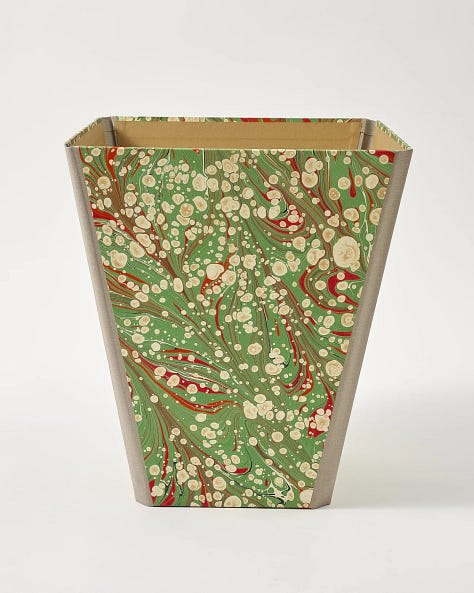
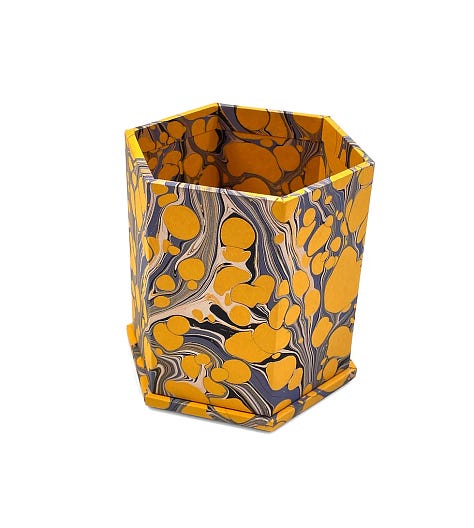
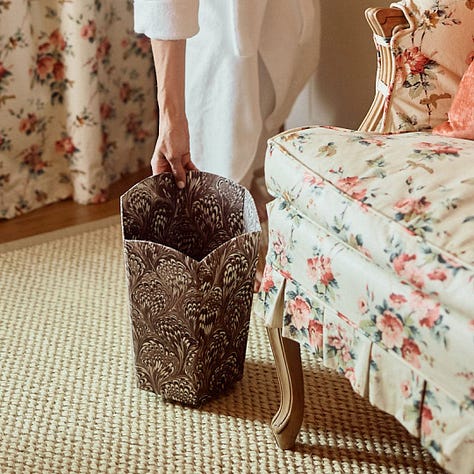
Left to right: Cabana, Parvum Opus, and Weezie's bins, linked below. Honorable mentions of marbled paper-covered waste bins: Cabana’s Marbled Wastepaper Bin — they do everything well, but I prefer their tissue box cover construction to the waste bin. I also admire the prints (mostly marbled) on Parvum Opus’ Hexagonal Wastepaper Basket; these are chic, but expensive compared to alternatives, and the online interface is not intuitive. Finally, Weezie’s Scollop Wastebin in the Espresso Feather colorway. Note that foldable constructions (Il Papiro offers one as well, which I did not include) are not as sturdy.
LACQUER
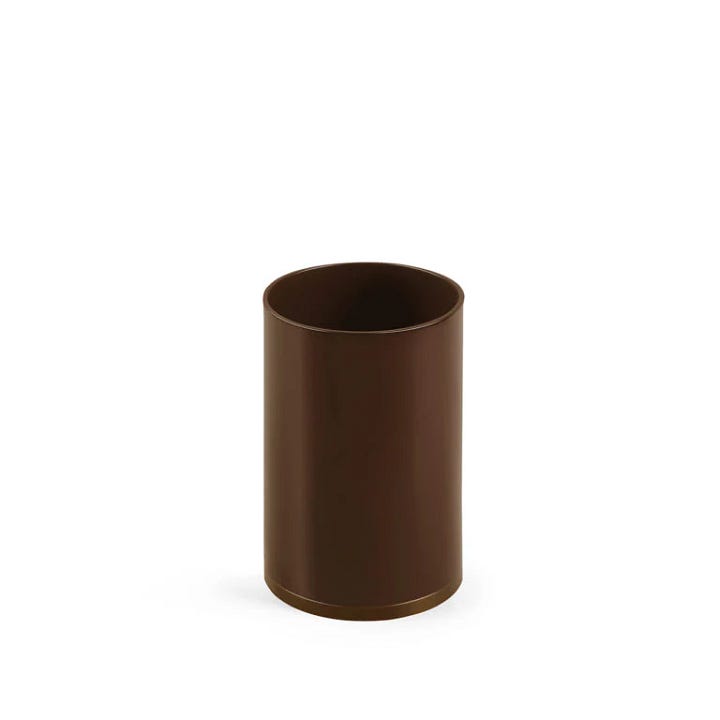

Polished and durable, I wish I had discovered The Lacquer Company’s bins before selecting styles for my bathrooms. I might still consider this as an upgrade in my children’s bathroom. I especially like the styles Round Bin and Hexagonal Bin with the metal base detail.
METAL
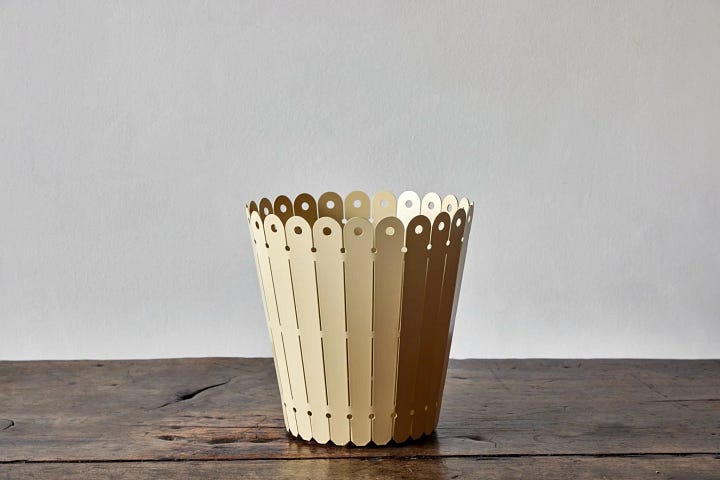
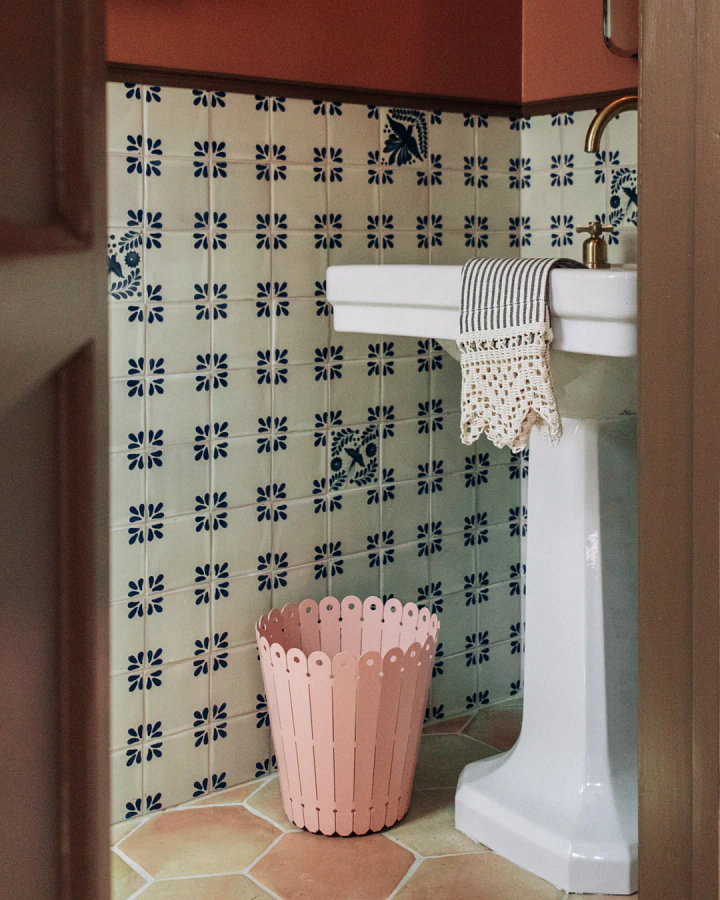
The whimsical design and durability of Nickey Kehoe’s Painted Lady Waste Bin is tempting me to add this in the Dune color way to my son’s room — the one room still in need of a waste bin in my home.
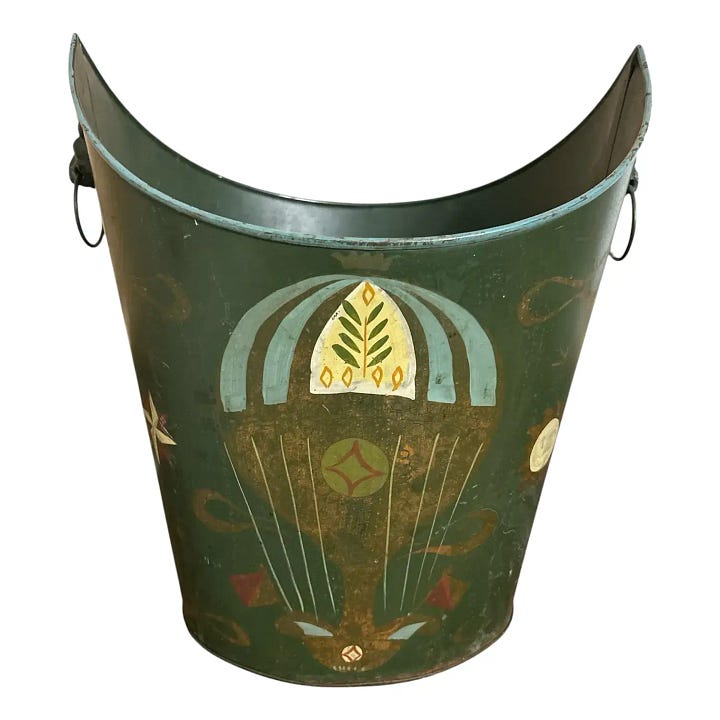
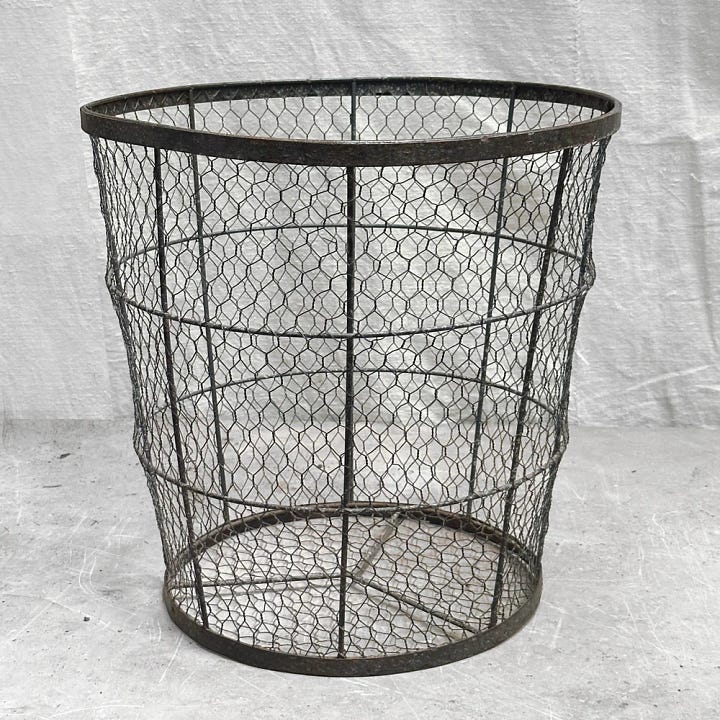
Waste bins (along with log bins and umbrella stands) are an excellent accessory to find in vintage/resale marketplaces. If you’re searching online versus flea market or antique store, try the search terms ‘metal waste bin,’ ‘painted metal waste bin,’ and ‘copper bin.’ You will find a wide range of styles, from the child-like sweet (the Vintage Signed George Briard Waste Bin Chairish find) to the Uber-masculine (the Vintage Industrial Wire Basket from John Derian), and traditional styles in between.
LEATHER
For a quintessential sleek leather design, Paradise Row’s Leather Wastebaber Bin hits the mark. I would also consider Nina Campbell’s Leather Bino Bin Cognac for a less expensive, but still luxe option.
You will find classic-looking leather bathroom options with lining at some of the sites listed in this post, but they seem too impractical to me to include — I don’t know why I’m less comfortable with this than with a paper bin with liner, but I am.
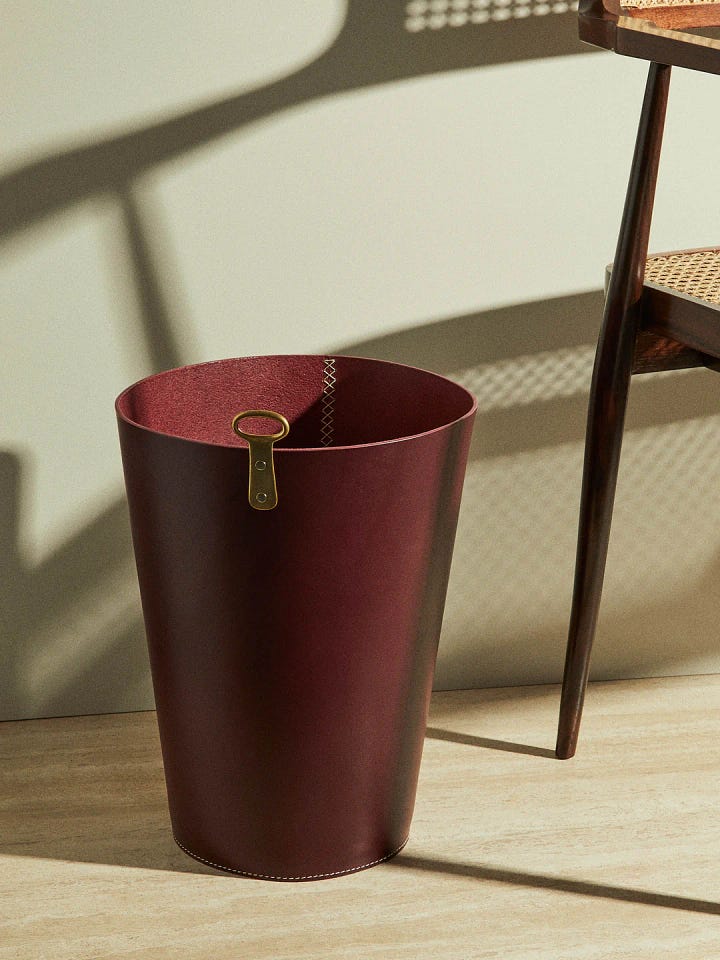

As someone who often finds leather wastebaskets a bit too sterile [is it just me or can these read impersonal-mega-yacht-decor?], I love the handwork and metal detail on Otis Ingrams’ Eyelet Leather Wastepaper Bin. The brass loop adds a functional detail that reads more countryside cozy than overly groomed.
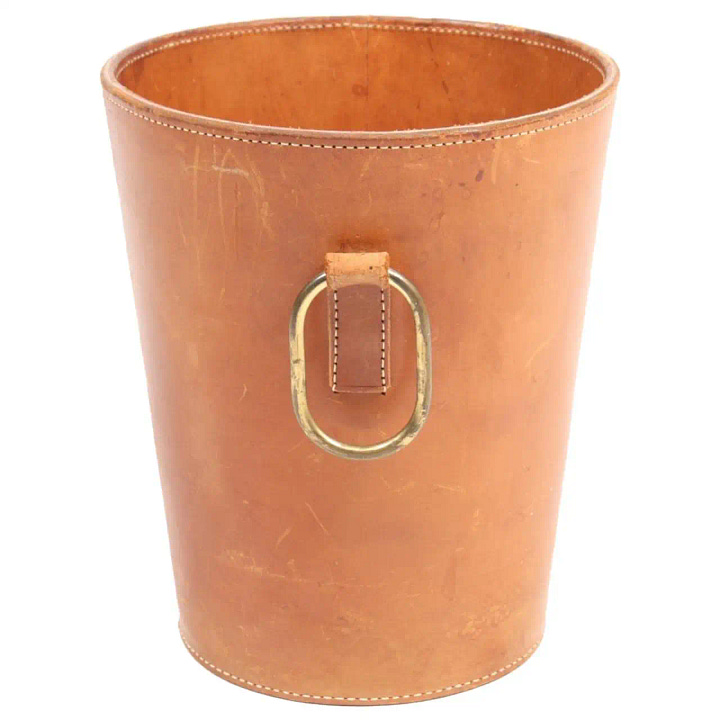
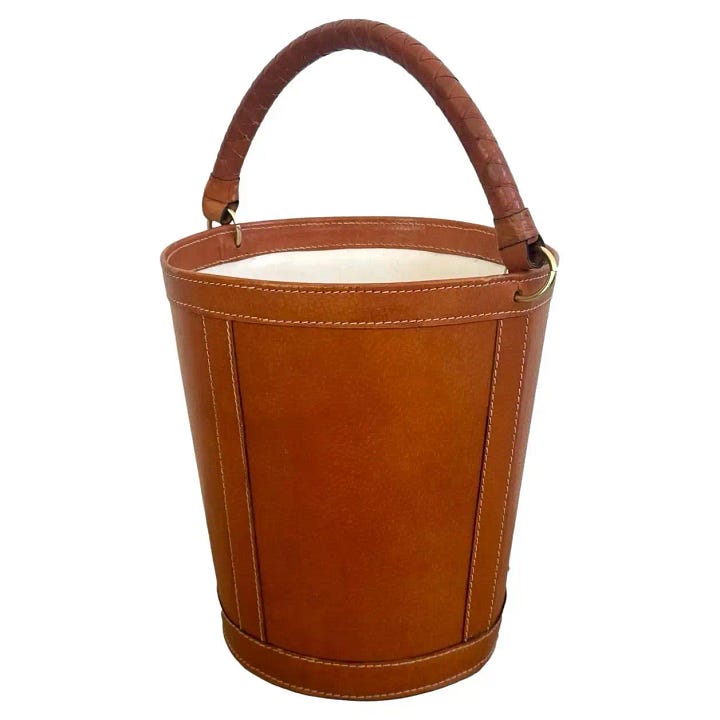
Vintage leather waste bins are another example of strong search potential on the resale market. I saw a number of 1950s Illums Bolighus bins like the above in a range of colors, conditions, and price points on both Chairish and 1stDibs. I also found a few examples of 1970s French Saddle Leather Wastebaskets.
FAUX SHAGREEN
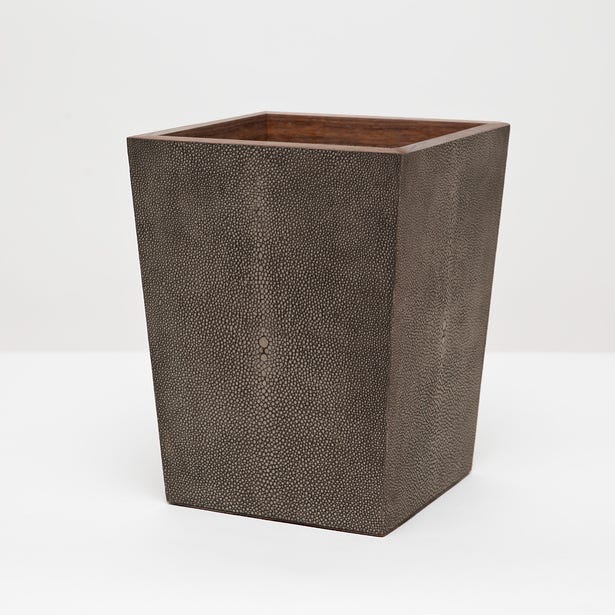

Over a decade ago, I bought Anthem’s Dark Mushroom Shagreen Wastebasket for my San Francisco studio apartment bathroom. The California retailer has a wide range of waste bins, including this teal leather option I debated including above. After several moves, my shagreen number got pretty banged up. In search of a replacement, I discovered a near-identical make by Pigeon and Poodle. I believe this brand is only available wholesale, but as a result you can find it in many boutiques. This site appears to offer a large assortment. My favorite design from the offering — which closely matched my Anthem piece — is the Manchester Faux Shagreen Waste Basket. I prefer the single shagreen design on Anthem’s versus the quadrant on Pigeon and Poodle’s, though the Pigeon and Poodle is available in many color ways and comes with a metal insert that is nice for maintenance, particularly in the bathroom.
WOVEN NATURAL MATERIALS
There is a world of [to me] ubiquitous raffia, rattan, and seagrass options. They don’t excite me personally, so I haven’t included them here, though I must admit I’ve reached for them as a cheap and chic option on occasion.
For those with an even more bohemian, colorful bent than mine, East African hand-woven baskets are definitely worth considering, and The Basket Room is a good resource.
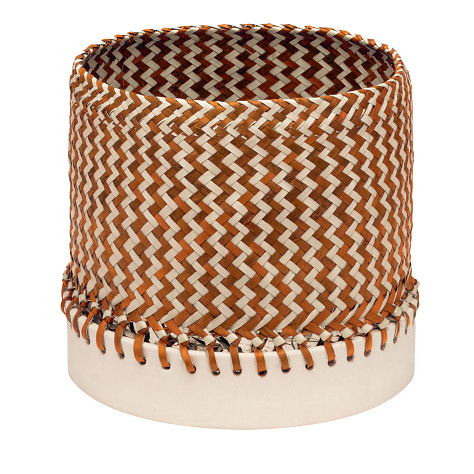
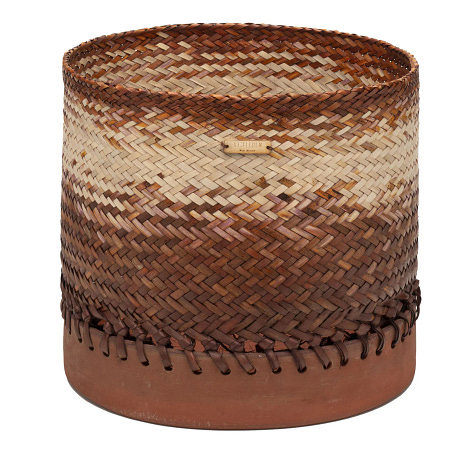
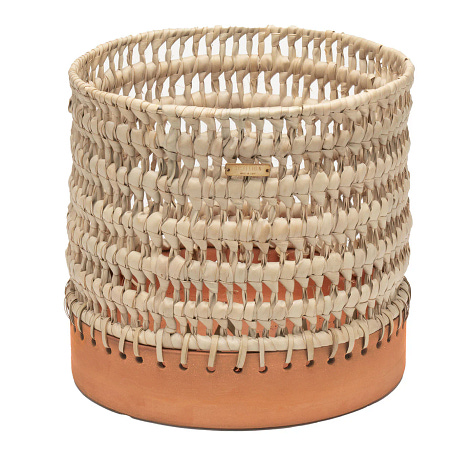
Left to right: Stilleben's Zig Zag Orange Basket, Brown Shades Basket, and Nude Rigid and Orange Basket, as pictured by seller. All that to say, in searching for a unique woven option that speaks to my aesthetic, I stumbled upon an Italian ceramicist, Stilleben, that offers a mixed-media (ceramic base, woven belly) basket that I find very visually intriguing. This, this, and that, shown above, stood out.

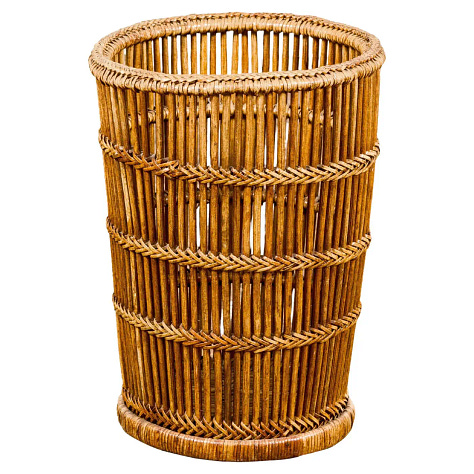
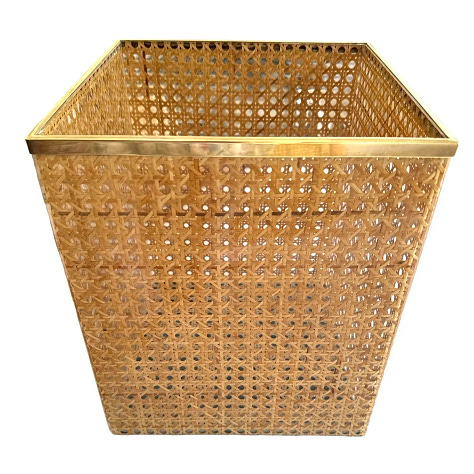
Natural fiber constructions are the final vintage bin worth hunting for that I’ll highlight. I was blown away by the Chinese Woven River Baskets, c. 1800 I found, and at a reasonable price. Of course, there is a trove of rattan options; this piece with the braided detail stood out to me. And, while a bit too Palm Beach Regency [is that even the right way to describe it?] for my personal style, I was pleasantly surprised by this Vintage Crespi for Dior Lucite Caning Waste Basket.
If you’re still looking for a new year’s resolution, here’s one thought: it’s the small, mundane, necessary details of our space (and life) that when handled with great attention and creativity can be beautiful and truly enhancing. Let’s take that lens to improving our homes this year and see what happens. Goodnight and good luck.

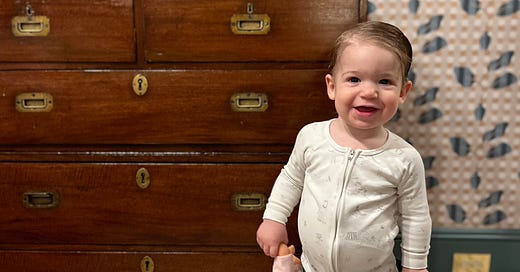


Always a joy to read❤️